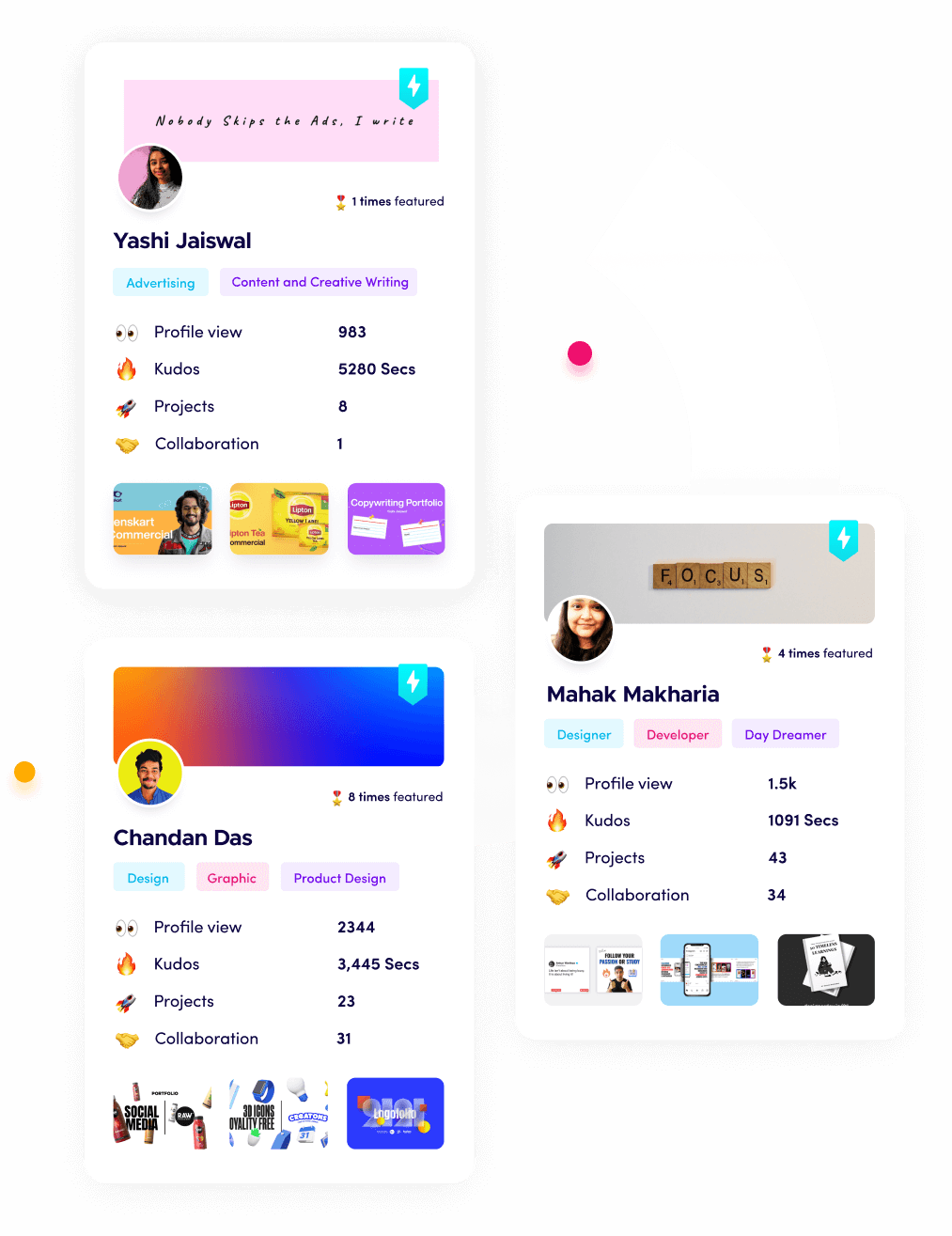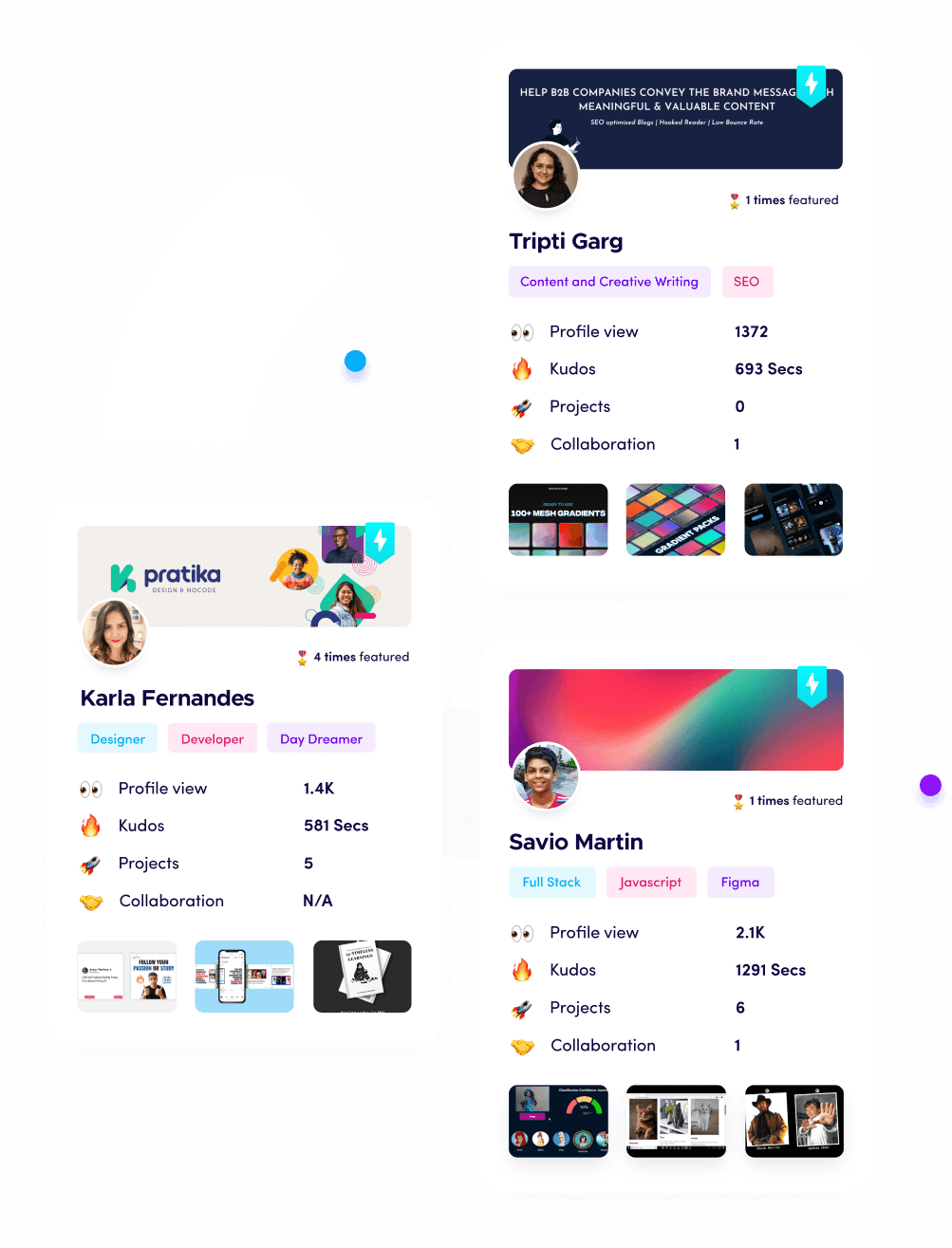How to Build a User-Friendly Website: A Step-by-Step Guide

Riten Debnath
18 Jun, 2025

Are you tired of websites that frustrate you before you even find what you need? In 2025, a user-friendly website is the most important factor for keeping visitors happy, building trust, and growing your brand or business. If you want your website to stand out, win more customers, and actually get results, you need to master the art of user-friendly web design.
I’m Riten, founder of Fueler, a platform that helps freelancers and professionals get hired through their work samples. In this article, I’ll show you every step to build a website that users love. But remember, a great website is only half the story—the real secret is how you present your work and results. Your website is your proof of skill, your credibility, and your shortcut to trust. Let’s get started on building a site that’s easy to use and impossible to forget.
1. Define Your Website’s Purpose and Audience
Knowing the reason for your website and who you’re building it for is the foundation for every design and content decision. Start by clarifying the main goal—are you selling products, sharing a portfolio, or providing information? Then, research your target audience’s habits, needs, and the devices they use.
- Set a clear purpose for your website, such as e-commerce, blog, portfolio, or lead generation. This will shape the structure, features, and content of your site from the very beginning, ensuring you never lose sight of your main objective.
- Conduct research or surveys to understand your audience’s preferences, challenges, and expectations. Dive deep into what your visitors care about, what problems they want solved, and how they prefer to interact with websites in your niche.
- Identify the main actions you want visitors to take, like signing up, buying, or contacting you. Make these actions obvious and easy, so users never have to guess what to do next.
Why it matters:
When your site is built around clear goals and a deep understanding of your users, you’ll create a more relevant, engaging, and effective experience that keeps visitors coming back and taking action12.
2. Plan a Logical and Intuitive Site Structure
A well-organized site structure helps visitors find what they need without confusion. Map out your pages and how they connect before you start building.
- Create a sitemap that outlines all main pages and their relationships. This visual plan acts as a roadmap for both you and your users, ensuring there are no dead ends or confusing navigation paths.
- Use clear, familiar menu labels like “Home,” “About,” “Services,” and “Contact.” Avoid creative or vague names that can make visitors hesitate or get lost.
- Group related content together and avoid burying important pages deep in submenus. Keep your most valuable information within two or three clicks from the homepage for fast, easy access.
Why it matters:
An intuitive structure keeps users from getting lost, encourages them to explore, and helps search engines understand your content, boosting your SEO and conversions12.
3. Design for Simplicity and Visual Hierarchy
A clean, simple design makes your site easier to use and more visually appealing. Guide users’ attention to what matters most with smart use of size, color, and spacing.
- Limit your color palette to a few harmonious colors and use no more than three easy-to-read fonts. This creates a calm, professional look that’s easy on the eyes and makes your content stand out.
- Use bold headlines and large buttons for important calls to action. Make sure users can instantly spot where to click or tap next, whether they’re on a phone or desktop.
- Keep each page focused on its main purpose and avoid cluttering with unnecessary graphics or text. Every element should support your goals and help users move forward.
Why it matters:
Simplicity reduces distractions and confusion, making it easier for visitors to take action. A clear visual hierarchy ensures users notice the most important content first, leading to higher engagement and conversions123.
4. Ensure Responsive and Mobile-First Design
Most users visit websites on their phones, so your site must look and work great on any device. Responsive design automatically adapts your layout for every screen size. A quick way to see how your site performs on different devices is by using a mobile responsive testing tool.
- Use responsive templates or frameworks that adjust to desktops, tablets, and smartphones. This guarantees your site is accessible and attractive no matter how people access it.
- Test your website on multiple devices and browsers to catch display issues. Regularly check for broken layouts, unreadable text, or buttons that are too small to tap.
- Design with mobile users in mind, using large tap targets, easy-to-read text, and simple navigation that works with a thumb.
Why it matters:
A mobile-friendly site reaches more people, keeps users engaged, and improves your search rankings, since Google prioritizes mobile usability124.
5. Optimize for Fast Load Times and Performance
Slow websites drive visitors away. Every second counts, so make sure your site loads quickly.
- Compress images and use modern formats like WebP to reduce file size without sacrificing quality. Large images are the top cause of slow sites—optimize every photo and graphic.
- Minimize the use of heavy scripts, plugins, and third-party widgets. Only add features that truly benefit your users, and remove anything that slows down performance.
- Choose reliable hosting and consider a content delivery network (CDN) for global speed. Fast hosting and CDNs make sure your site loads quickly for users everywhere.
Why it matters:
Fast load times keep users engaged, lower bounce rates, and boost your SEO. Users expect instant results, and a slow site can cost you sales and credibility124.
6. Make Navigation Effortless and Obvious
Navigation should be so simple that users never have to think about where to click next. If visitors can’t find what they need, they’ll leave—no matter how good your content is.
- Use a sticky or fixed menu that stays visible as users scroll, so they can jump to other pages anytime without searching.
- Place clear, bold calls-to-action (CTAs) like “Buy Now,” “See Portfolio,” or “Contact Us” on every page. Make sure these buttons stand out and are easy to spot.
- Add breadcrumbs and a search bar for larger sites to help users find their way, especially if you have a lot of content or products.
Why it matters:
Effortless navigation keeps users happy, reduces frustration, and guides visitors toward your most important pages and actions, increasing your chances of achieving your website’s goals1243.
7. Write Clear, Engaging Content for Your Audience
Your content should be easy to read, helpful, and focused on what your visitors care about. Don’t try to impress with big words—focus on clarity and value.
- Use short paragraphs, headings, and bullet points to make content easy to scan. Most users skim, so make information easy to find at a glance.
- Speak directly to users, addressing their needs, questions, and pain points. Use “you” and “your” to make content feel personal and relevant.
- Proofread and edit to avoid typos and errors that make your site look unprofessional. Use tools or ask someone else to check your work for mistakes.
Why it matters:
Clear, engaging content keeps visitors on your site longer, builds trust, and encourages them to take action. It also helps with SEO, as search engines reward well-written, user-focused content123.
8. Use Visuals and Multimedia Wisely
Images, videos, and graphics can make your website more engaging, but only if they’re used thoughtfully and don’t slow down your site.
- Choose high-quality, relevant images that support your message and make your site more attractive. Avoid generic stock photos when possible.
- Add videos to explain complex ideas, show product demos, or tell your story. Keep them short and make sure they load quickly.
- Use alt text for images and captions for videos so everyone, including people with disabilities, can enjoy your content.
Why it matters:
Good visuals make your site more memorable and help explain your message faster than words alone. They also break up text, making your site more fun and easier to explore123.
9. Test, Improve, and Listen to User Feedback
Building a user-friendly website is an ongoing process. The best sites are always being tested and improved based on real user feedback.
- Use analytics tools like Google Analytics or Hotjar to see how people use your site. Watch for pages where users get stuck or leave.
- Add a simple feedback form or survey to ask visitors what they like and what could be better. Direct feedback is the fastest way to spot problems.
- Use what you learn to make regular improvements. Even small changes—like moving a button or rewriting a headline—can have a big impact.
Why it matters:
Continuous improvement keeps your site fresh, relevant, and user-focused. It shows visitors that you care about their experience and helps you stay ahead of competitors12.
10. Make Your Website Accessible to Everyone
A truly user-friendly website is accessible to people of all abilities, including those with visual, hearing, or mobility challenges.
- Add alt text and descriptions to images, buttons, and links so screen readers can describe them to visually impaired users.
- Use high-contrast colors and readable fonts to help users with limited vision.
- Make sure your site can be navigated by keyboard alone, not just a mouse or touch.
Why it matters:
Accessibility isn’t just the right thing to do—it expands your audience, improves SEO, and ensures everyone can use your site, regardless of ability123.
Final Thought
Building a user-friendly website in 2025 is not just about having a modern look—it’s about creating an experience that guides every visitor smoothly from their first click to their final action. By focusing on clear goals, intuitive structure, simple design, fast performance, easy navigation, engaging content, smart use of visuals, continuous improvement, and accessibility, you set yourself apart from the competition. Remember, your website is your digital handshake—it’s how you prove your value, build trust, and open doors to new opportunities. Invest the time to get it right, and your site will reward you with loyal visitors, higher engagement, and lasting success.
FAQs
1. What are the most important features of a user-friendly website?
The most important features are fast load times, simple navigation, mobile responsiveness, clear calls to action, and accessible design for all users.
2. How can I make sure my website works well on mobile devices?
Use responsive design templates, test your site on various devices and browsers, and ensure buttons and text are easy to tap and read on small screens.
3. Why does website speed matter so much?
Slow websites drive visitors away and hurt your search rankings. Fast sites keep users engaged, reduce bounce rates, and help you rank higher on Google.
4. What tools can help me test and improve my website’s user experience?
Google Analytics, Hotjar, Microsoft Clarity, and feedback forms are great for tracking user behavior and finding areas to improve.
5. How do I make my website accessible to everyone?
Use alt text for images, high-contrast colors, readable fonts, and ensure your site can be navigated with a keyboard. Following accessibility guidelines helps all users enjoy your site.
What is Fueler Portfolio?
Fueler is a career portfolio platform that helps companies find the best talents for their organization based on their proof of work.
You can create your portfolio on Fueler, thousands of freelancers around the world use Fueler to create their professional-looking portfolios and become financially independent. Discover inspiration for your portfolio
Sign up for free on Fueler or get in touch to learn more.


